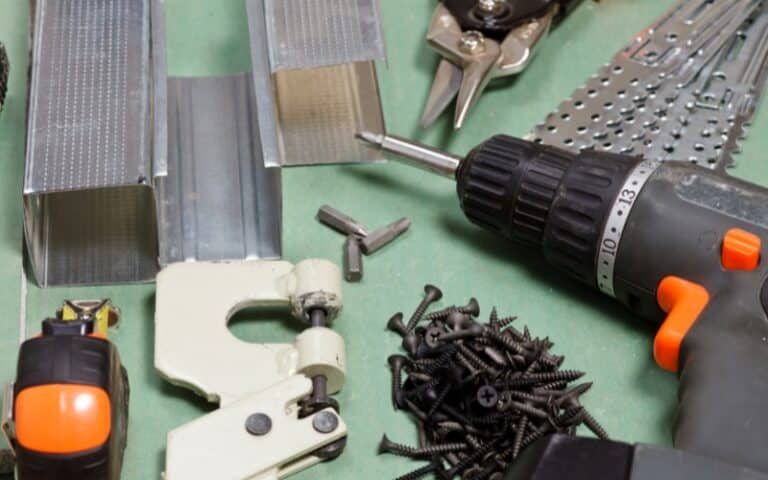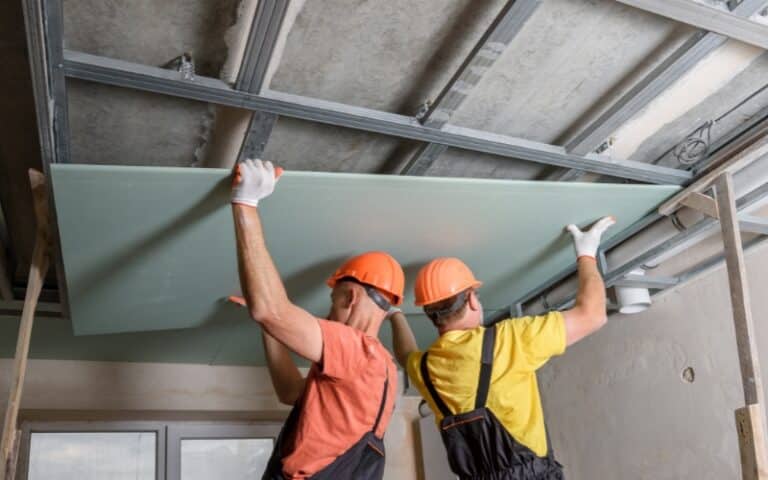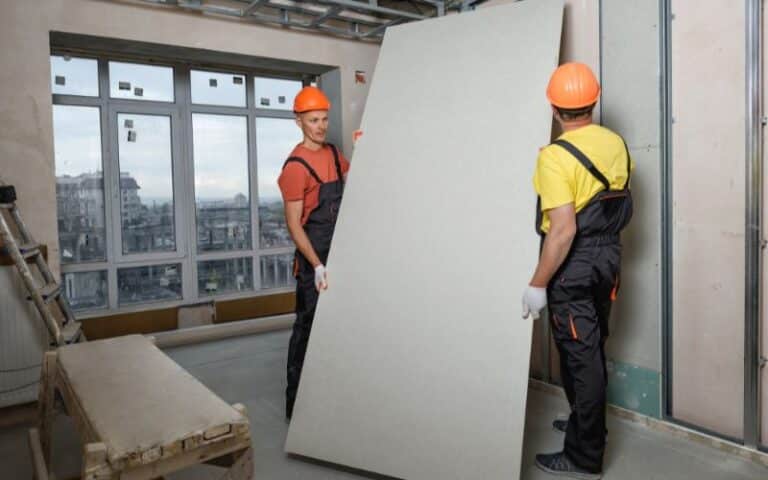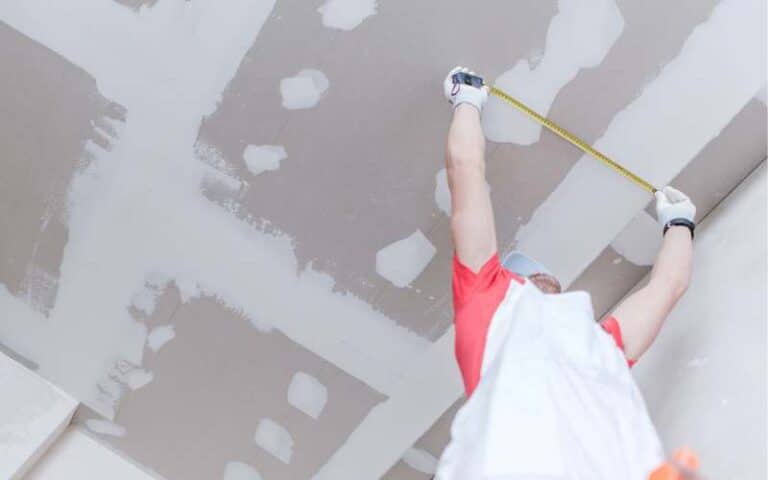Dealing with peeling paint can be a challenging experience. Generally, no homeowner likes peeling paint, and it usually comes off as an eyesore.
Most often than not, maintaining your walls to look good is impossible, especially when you have a constantly peeling wall. Consequently, why does drywall mud flake off?
Several reasons cause drywall mud to flake off, including poor application, moisture, cheap compound, expired paint, incompatible paint or primer, heat on the area, poor surface preparation, and not allowing proper dry time after application.
This article will explain the possible reasons for drywall mud flaking off.
By the end, you will understand the best way to apply the drywall mud and avoid unnecessary paint flaking off.
Ready for a Drywall Quiz?
Five Reasons Why Drywall Mud Flakes Off?
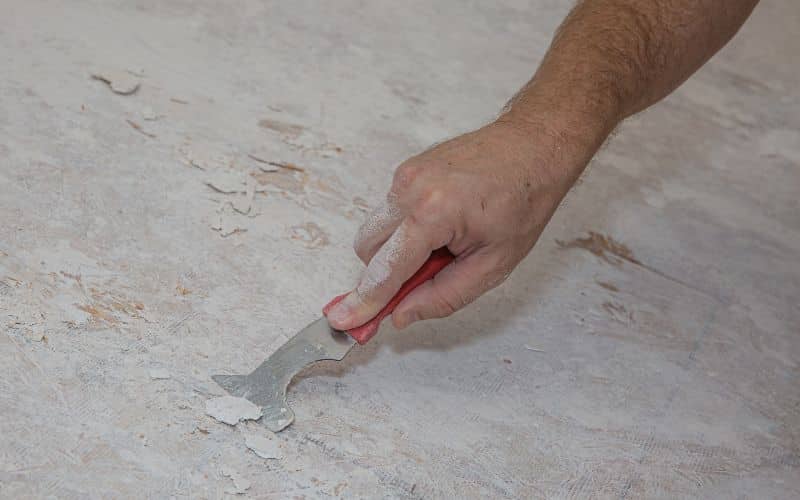
There are various reasons why drywall mud flakes off, and regardless of the reason, it does not make your home look any better.
Here, I will explain the five most common reasons drywall mud flakes off.
#1. Poor Application
Poor application is one of the primary reasons why your drywall mud flakes off. You must follow particular prerequisites to ensure your drywall does not peel after application.
Failure to follow the required conditions will cause drywall mud to flake off in time.
Doing it yourself would help first to learn the fundamentals and practice a lot before carrying out any project.
During drywall mud application, beginners must correct some things, such as misapplying the mud.
Considering all the fundamental factors and adequately adhering to instructions, your drywall mud will not flake off after application.
#2. Moisture
Moisture is a common source of problems in a person’s house. Your drywall mud will flake off and peel if there is too much moisture in the space.
It would help to know that humidity can harm drywall mud. As such, you must lower the humidity level if the drywall is in an overly humid room.
Generally, if your wall becomes wet regardless of the source, the drywall mud will eventually start flaking off, especially when the source of wetness remains constant.
#3. Cheap Compound
Using a cheap drywall mud compound is a significant culprit for peeling drywall mud. The quality of the drywall mud you use is crucial in its durability.
The cheaper the drywall compound you use, the quicker it will flake off during unfavorable conditions, especially when you fail to apply it correctly.
However, it would help to know that just because you used a cheap compound does not necessarily mean it will flake off since several other factors can cause your drywall mud to flake off.
However, it would always help to use the services of an expert when getting compound mud. That way, you are sure about the quality of the product.
#4. Poor Drywall Mud and Water Ratio
Please properly use the correct ratio while mixing compound mud with water to avoid poor finishing and flaking off of your drywall mud after some time.
Generally, one of the most crucial components when prepping your drywall mud for application is having the proper water-to-mud ratio.
For instance, when using 5 kg of drywall mud, the recommended quantity of water is 500ml to 900ml.
A proper blend of mud with water will give you the perfect durability after application.
#5. Poor Surface Prepping
Applying drywall mud involves many steps, including preparing the surface.
It would help to know that old wall characters typically include old dust, peeling paint from the past, soot, and other debris.
Before applying the drywall mud to the surface, thoroughly clean the wall to avoid weakening the surface.
A weak surface won’t have enough friction to hold drywall mud on the wall, consequently leading to the flaking of the compound.
Why Does Drywall Flake Off After Painting?
Dealing with flaking-off paint is not just upsetting but also expensive. You may wonder why your drywall flakes off after painting. Well, you are just in the right place.
Here, I will explain the various factors that make drywall flake off after painting. There can be one of many factors causing your drywall to peel after painting.
And knowing the particular cause will go a long way in helping you resolve the problem because constantly repainting your wall to maintain beautiful looks is an expensive task to handle.
Generally, the factors responsible for drywall flaking off after painting include the following.
- Moisture.
- Poor paint quality.
- Excessive paint application.
- Incompatible primer.
- Concentrated heat on the area.
- Poor prepping of the surface.
It would help to know that painting is a big deal and you must be willing to invest in good quality paint for your work.
When you use low-quality paint for your work, you must expect to have it peel over time once it hits an unfavorable condition.
Generally, it would be best to spend more cash on painting so you don’t have to repeat your walls frequently.
Failure to allow drywall mud to dry before applying paint will also cause the compound to flake off.
Also, applying excessive paint causes the paint to bubble and eventually peel over time.
Not using a primer when applying paint to your drywall mud is another reason for the peeling. It would help to know that primer helps paint adhere better to drywall mud.
Also, moisture from large tubes or an improperly plugged house plays a crucial role in peeling off drywall mud after applying paints.
Generally, anything causing moisture will cause the drywall to peel.
Can You Fix Drywall Mud After Painting?
While it is possible to fix drywall mud after painting, it would help to know that you will have to re-prime the surface and also apply new paint to the wall.
You will generally have to use a joint drywall compound for repairs. It is always safer to make repairs early once you notice your drywall peeling.
And the first thing you need to do is to scrape the peeling surface and properly sand the area.
Here are a few steps to fix drywall mud after painting.
#1. Scrape Away the Peeling Area
Use a scraper to remove the peeling fragments, and depending on the area, you can use a damp cloth to remove dust and other debris or use a vacuum cleaner to vacuum the entire surface.
#2. Apply Patching Materials
If there is a need to apply patching materials to correct any damages or imperfections, go for it.
You can use a putty knife to adequately apply patching materials over the imperfect areas.
Wipe down any debris once you are done, especially when handling a large area.
Now, you can apply painter’s tape around the area you intend to paint.
#3. Apply a Primer
A primer will help your paint to adhere better to the drywall mud. Ensure to apply as recommended by the manufacturers.
It would help to know that applying a primer to your wall before painting is not optional. Once you skip this step, you create room for your paint to peel due to poor adhesion.
#4. Apply Your Paint
The final step is to apply your paint to the surface. You must wait for the primer to dry before applying the first coat of paint to the wall.
Also, allow the first coat of paint to dry properly before you apply the last coat to your wall.
It would always help to use two coats of paint to help prevent easy peeling off.
How Do You Know If Drywall Mud Has Expired?
Several factors regulate the lifespan of drywall mud ranging from the storage mode to the brand and, of course, if the product is mold resistant.
Generally, drywall mud comes in various formulas; regardless of the compound mud, none lasts forever.
While ultimately, the lifespan of drywall mud is determined by the storage mode and exposure to air, water, or mold, the estimated lifespan of drywall mud is 9 to 12 months.
The leftover from used drywall mud spoils even earlier than the sealed product.
In reality, the lifespan of your drywall mud can be shorter than you can ever imagine, even with proper storage due to variations in production.
That is why experts recommend that you use the product within nine months.
It would help to always check the expiry date before buying the product. And ensure not to use expired drywall mud for any project, as it will compromise the quality of the project.
When storing your drywall mud, appropriately cover the top layer of the plastic, soak up a piece of cloth in a mixture of bleach, and position it on top of the plastic.
The table below shows some differences between excellent and expired drywall mud.
| Good Drywall Mud | Expired Drywall Mud |
|---|---|
| It has a pleasant light chalk smell. | It has a foul rotten eggs smell. |
| Good drywall mud is whitish. | Bad drywall mud has a change of color. |
| Safe for a high-quality job. | Risk quality of the job. |
FAQs
What Is the Smell of an Expired Drywall Mud?
An expired drywall mud has an awful smell, described as a smell of rotten eggs, far from the pleasant light chalky scent of good drywall mud.

